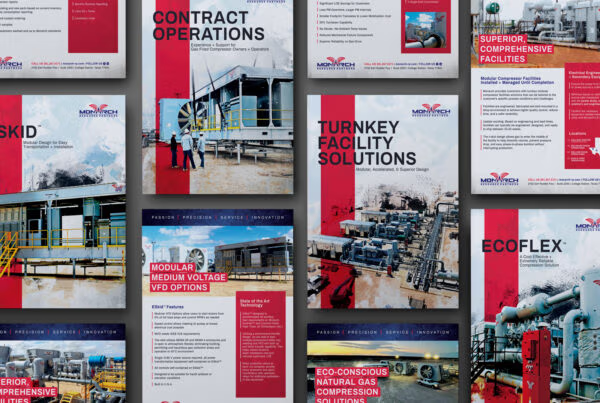
Thriving in today’s cut-throat industrial and commercial construction industry demands robust and smart marketing strategies. With the right blend of traditional techniques and modern digital tools, businesses can capture visibility and drive sales to unprecedented heights.
An Overview of the Commercial Construction Industry
The commercial construction landscape is constantly shifting, dictated by evolving consumer demands and technological advancements. In such a volatile environment, the recipe for success lies in marketing strategies capable of generating leads and enhancing sales conversions.
The Impact of a Strong Marketing Approach
A compelling marketing strategy is pivotal in driving exceptional sales results. Effective marketing not only raises your visibility amongst potential clients but also fosters trust and credibility. It acts as a bridge between your services and your clients’ needs, turning prospects into profitable sales.
Strategies to Skyrocket Sales
1. Embrace Digital Marketing:
Develop an appealing, user-friendly website and invest time in SEO optimization to climb the SERPs ladder. Make the most of social media platforms to display your projects, establish a dialog with your audience, and generate valuable leads.
2. Cultivate Networks and Partnerships:
Establish meaningful relationships with local businesses, architects, or engineering firms. Attend events or conferences specific to the industry. Cultivating your network can unveil opportunities and yield substantial business.
3. Harness the Power of Educational Content:
Generate trust by sharing valuable, educational content. This could be anything from webinars explaining construction concepts to blog posts analyzing industry trends. Position yourself as a trusted authority in your field.
4. Invest in Email Marketing:
Despite the surge of social media, email marketing remains a robust tool for direct communication with your clients. Send regular newsletters offering a mix of company news, industry insights, and useful tips to make your clients feel valued.

5. Utilize Professional Print Brochures:
Professional print brochures serve as tangible reminders of your business. This versatile tool offers a visual and tactile way to showcase your portfolio, reinforces your brand identity, and persuades potential clients to engage with you.
The professionally designed brochure is one of the most impactful sales tools. Often underestimated, professional print brochures offer several benefits:
Tangible: A well-designed brochure gives your prospective clients something tangible to take away, keeping your company in their mind.
Versatile: Brochures can be distributed in a variety of ways— mailed directly, left behind at meetings, or distributed at local businesses and events.
Informative: A professional brochure provides an opportunity to showcase your company’s portfolio, skills, previous projects, and testimonials in a visually engaging way.
Persuasive: With meticulously chosen graphics, compelling content, and clear calls-to-action, brochures can be a powerful persuasion tool for potential clients.
To reap the full benefits, consider hiring a professional graphic designer and copywriter. They can ensure your brochure reflects your brand image, communicates your business ethos effectively, and encourages your audience to take action.
6. Showcase Customer Testimonials:
Nothing is more persuasive than the words of satisfied customers. Share testimonials and case studies on your website and social media platforms to establish credibility and exhibit your work quality.
7. Maintaining a Unified Brand Across Different Marketing Mediums:
In the world of marketing, consistency is more than a recommendation—it’s a rule. A powerful brand is built on the solid foundation of consistency. Consistent branding across all your marketing channels—from your website to your print marketing and email campaigns—plays a pivotal role in strengthening your overall brand identity.
The importance of maintaining a uniform brand image across different marketing mediums cannot be overstated.
Impact on Brand Recognition: Your brand is the first impression potential clients have, and it’s paramount to make it memorable. Consistent messaging and visual elements across various platforms ensure your brand is instantly recognizable, cultivating familiarity and affinity among your target audience.
Boosts Trust and Reliability: Inconsistency in branding can lead to confusion and mistrust. A uniform branding strategy across all platforms demonstrates professionalism and commitment, fostering trust in your company’s reliability and credibility.
Conveys a Clear Brand Message: Inconsistencies in branding can muddle your brand message. Clear, consistent messaging across your website, print materials, and email campaigns ensures your value propositions and unique selling points always shine through.
Enhances Customer Loyalty: Consistent brand experiences at every point of contact help build strong emotional connections with your clients. This reinforcement ultimately leads to increased customer loyalty and advocacy, driving your business growth.
Implementing brand consistency involves using the same tone of voice, color schemes, typography, logo placement, and similar styles of imagery across all mediums. Every communication piece should reflect the same characteristic brand identity, from your website to your brochures, from your social media posts to your email campaigns.
It’s also crucial to ensure that this consistency transcends into the quality of services you offer. After all, your brand is not just your logo or tagline—it’s the total experience you provide to your clients. By maintaining consistency across all platforms and all areas of your business, you will increase brand recognition, build trust among customers, and ultimately drive growth in the commercial construction industry.
Commercial Construction Marketing: A Sum-Game Of Different Strategies
Enhancing the sales of your commercial construction business calls for a diverse range of strategies. Combining traditional tools like professional print brochures with digital tools such as SEO and social media can bring balance and drive desired results. While it’s essential to build your strategies around current trends, it’s equally important to adapt and evolve based on market dynamics. So leverage these techniques, and elevate your business to new heights in the commercial construction landscape.
The Full Commercial Construction Marketing Checklist:
- Digital Marketing:
- Create an easy-to-navigate, content-rich, and aesthetically-appealing website.
- Implement SEO strategies to improve website visibility on search engines.
- Develop a social media strategy for platforms such as LinkedIn, Facebook, and Instagram.
- Regularly post project updates, customer testimonials, industry news on social media.
- Networking and Partnerships:
- Partner with local businesses, architects, and engineering firms for collaborative projects or referrals.
- Attend local events or industry conferences to increase your industry network.
- Educational Content and Webinars:
- Create and share informative blog posts or articles related to market trends or construction insights.
- Host webinars on relevant construction topics to enhance online authority.
- Email Marketing:
- Start a regular newsletter featuring company updates, industry news, and helpful tips.
- Implement a system to track email marketing engagement and effectiveness.
- Professional Print Brochures:
- Hire a professional graphic designer and copywriter to create a compelling brochure.
- Highlight your company’s skills, portfolio, previous projects, and testimonials in the brochure.
- Develop a plan to distribute the brochures to potential clients via mail, meetings, or local events.
- Customer Testimonials and Case Studies:
- Collect and publish customer testimonials and case studies.
- Share these stories on your social media platforms and website.
- Brand Consistency:
- Develop a consistent brand guide to include logo, colors, typography, and imagery.
- Apply this brand guide consistently across all marketing materials – websites, brochures, social media, and emails.
- Regularly review your marketing assets to ensure brand consistency.
Remember, it’s not about simply ticking off the boxes, but about diligently implementing these strategies and tracking their effectiveness. Regularly revisit this checklist to ensure your progress and adapt the strategies according to your business’s evolving needs and market trends.
Have a design project in mind? Our team specializes in custom graphic design and marketing materials that make your brand stand out. Get in touch with our designers today to start your next project.










